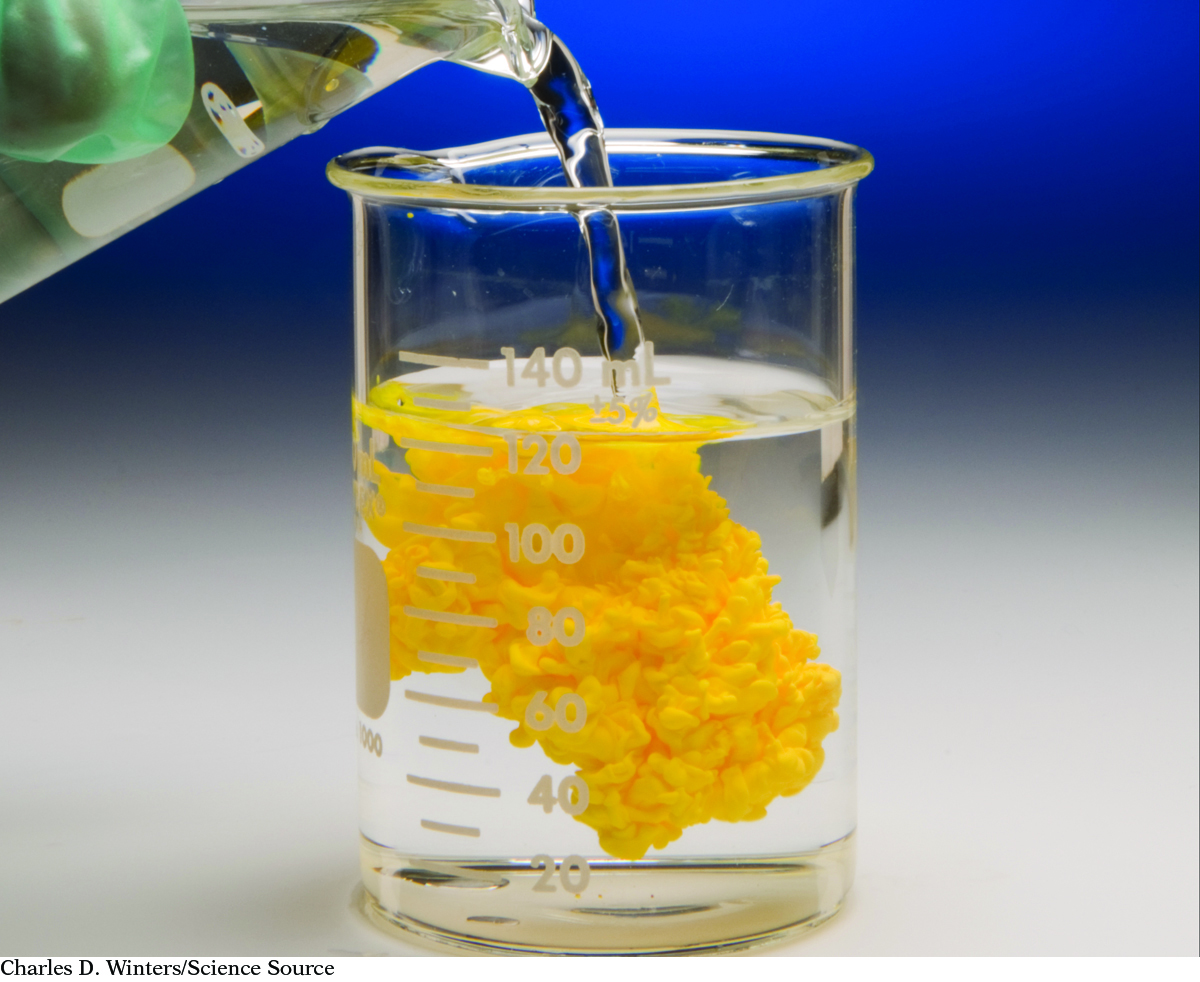Chapter 17 Summary

CHAPTER 17
Toxic Cleanup
SUMMARY
KEY TERMS
precipitate
precipitation reaction
complete ionic equation
spectator ion
net ionic equation
mole ratio
limiting reactant (limiting reagent)
stoichiometry
theoretical yield
actual yield
percent yield
Toxins Update
One way to remove toxic substances from water supplies is to add the appropriate ions to create a solid precipitate that can be filtered out. In other situations, the appropriate ions can be added to dissolve a solid into solution. A solubility table can help identify which ionic compounds can help remove a toxic ion from solution.
How do you know how much reactant you need? Sometimes, it is necessary to translate between moles and mass. The relationship between mass and moles is a proportional one, connected by molar mass. When comparing quantities of reactants and products, it is necessary to consider the mole ratios.
REVIEW EXERCISES
Question 17.1
1. Write a complete ionic equation and a net ionic equation for three precipitation reactions that involve the formation of solid nickel compounds.
Question 17.2
2. Calcium chloride reacts with sodium phosphate to produce calcium phosphate and sodium chloride. The unbalanced chemical equation is
____CaCl2(aq) + ____ Na3PO4(aq) → ____ Ca3(PO4)2(s) + ____ NaCl(aq)
Balance the chemical equation for this reaction.
If you start with 13.5 g of CaCl2 and 9.80 g of Na3PO4, how many grams of calcium phosphate can you expect to produce?
How many grams of excess reactant will be left over?
In the laboratory, you run a procedure for this reaction, and you produce 8.20 g of calcium phosphate. What is the percent yield for your procedure?
Question 17.3
3. Suppose that you mix a slightly soluble compound with water.
Draw a particle view diagram of the resulting mixture.
Would the resulting mixture be homogeneous or heterogeneous? Explain.